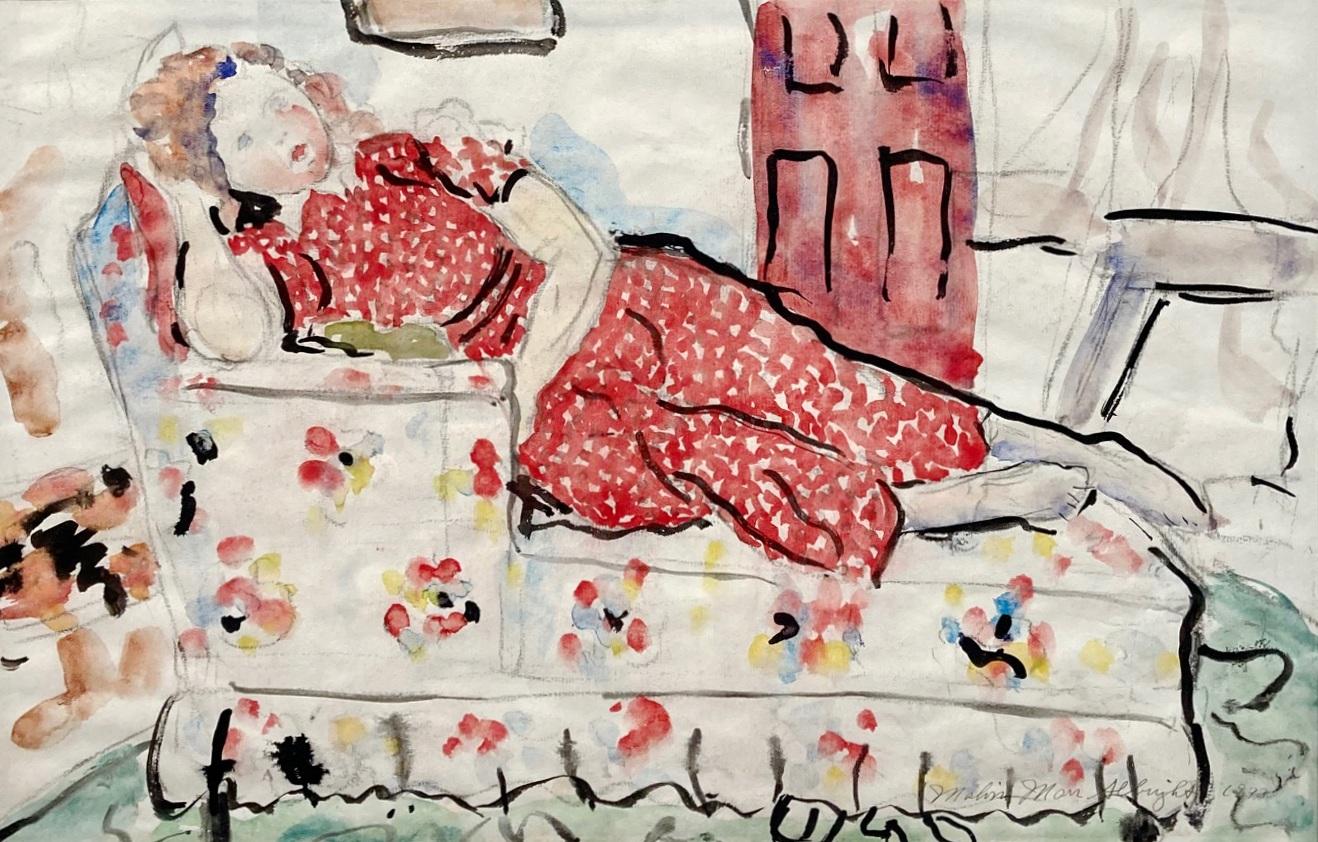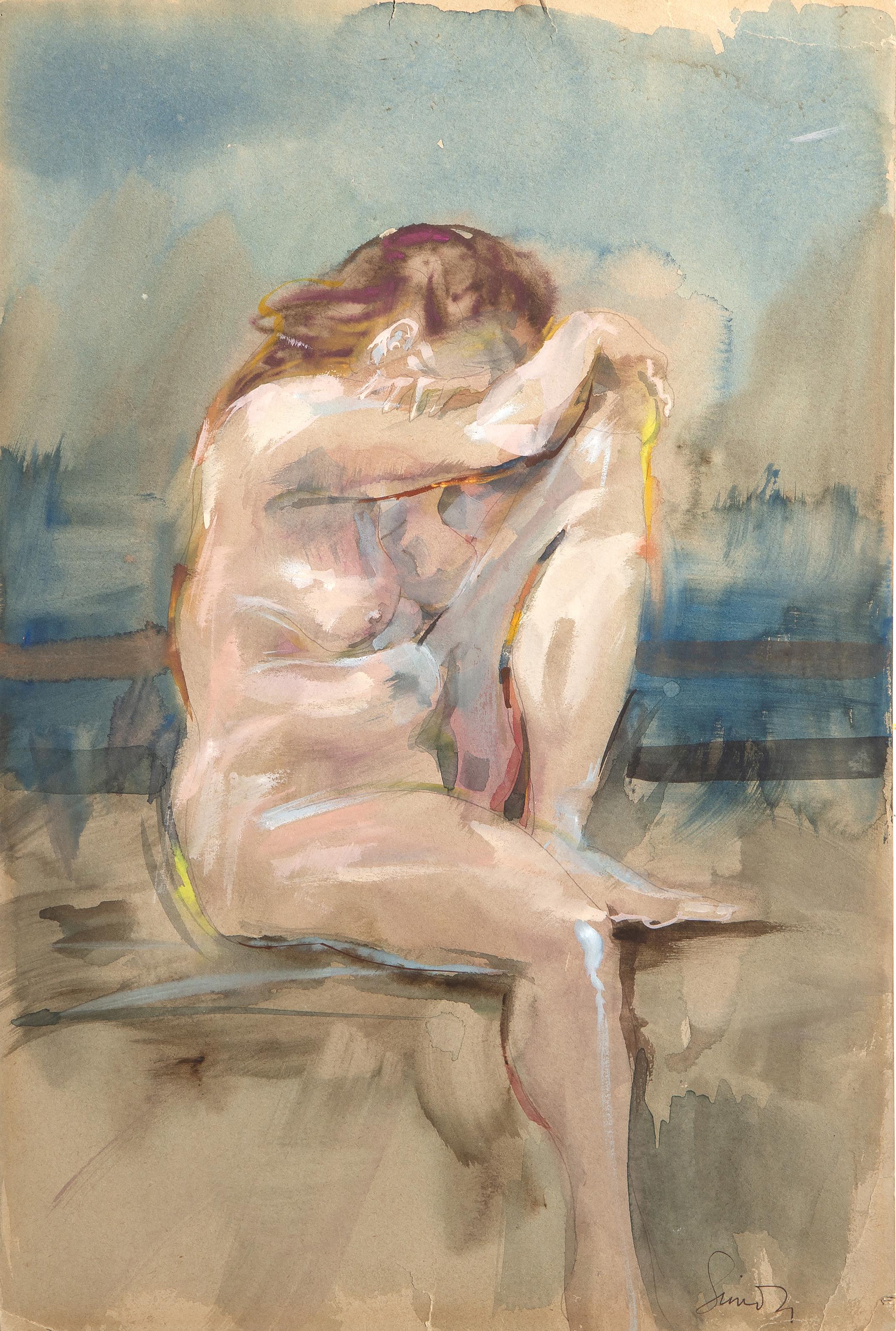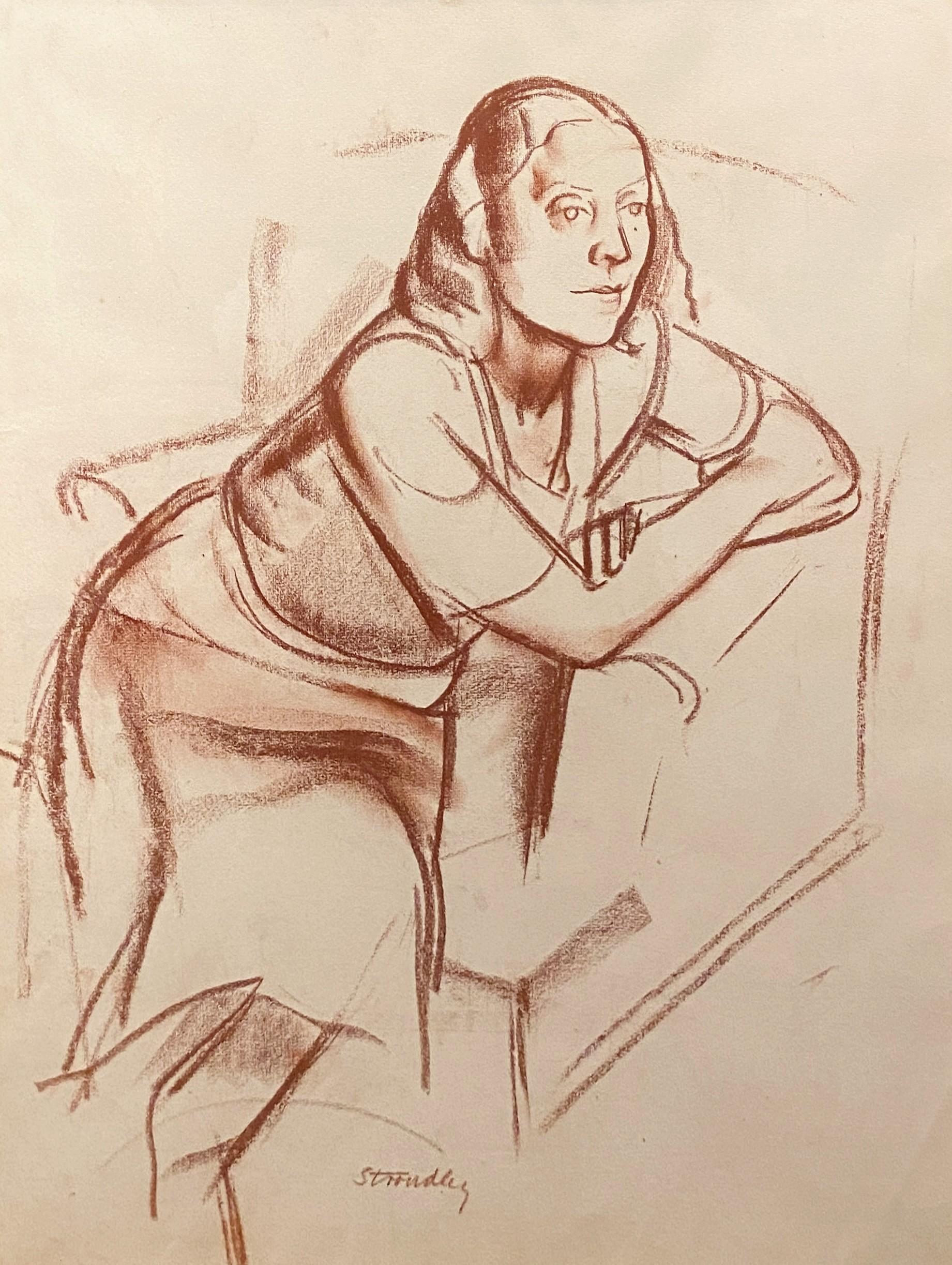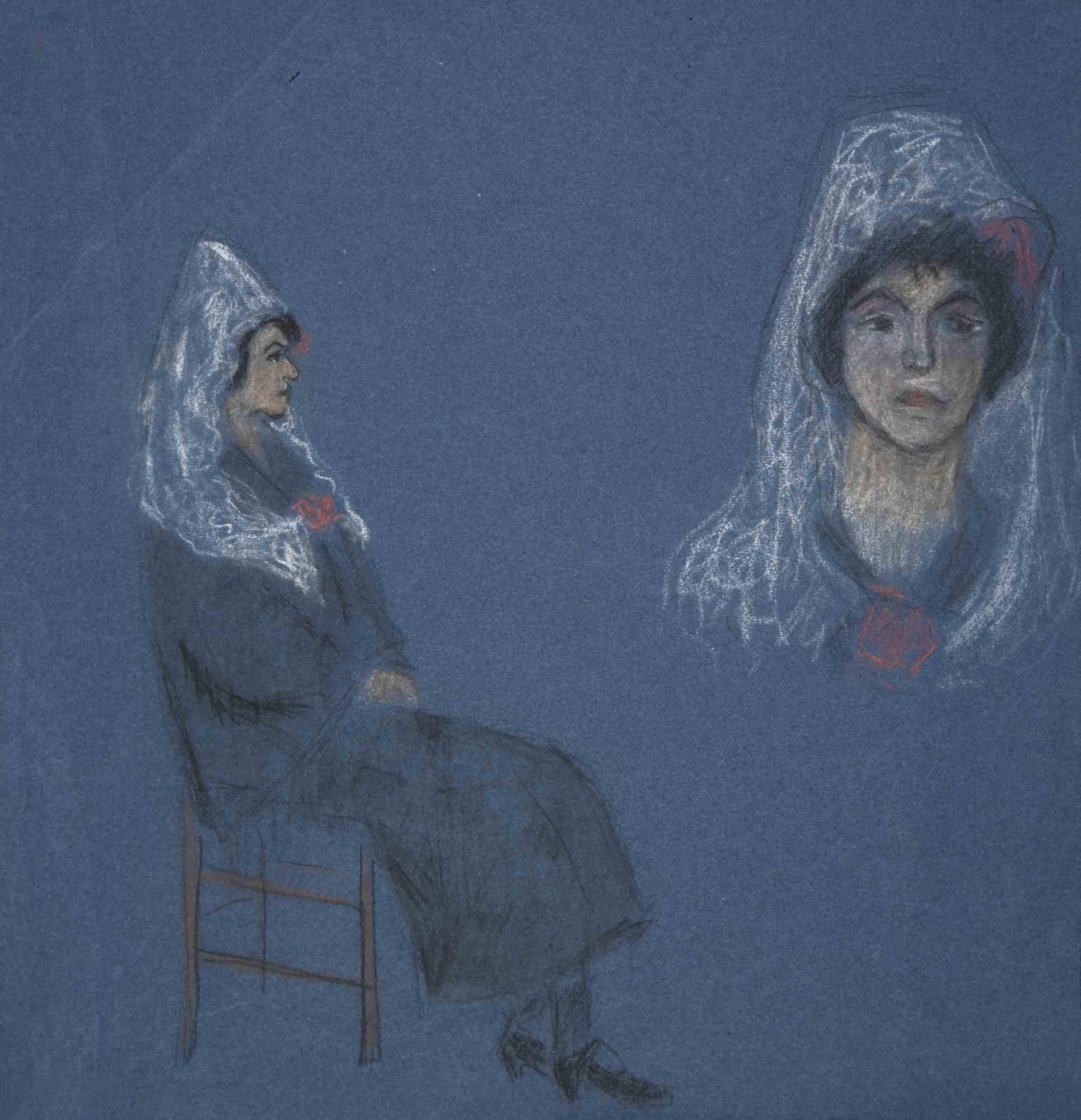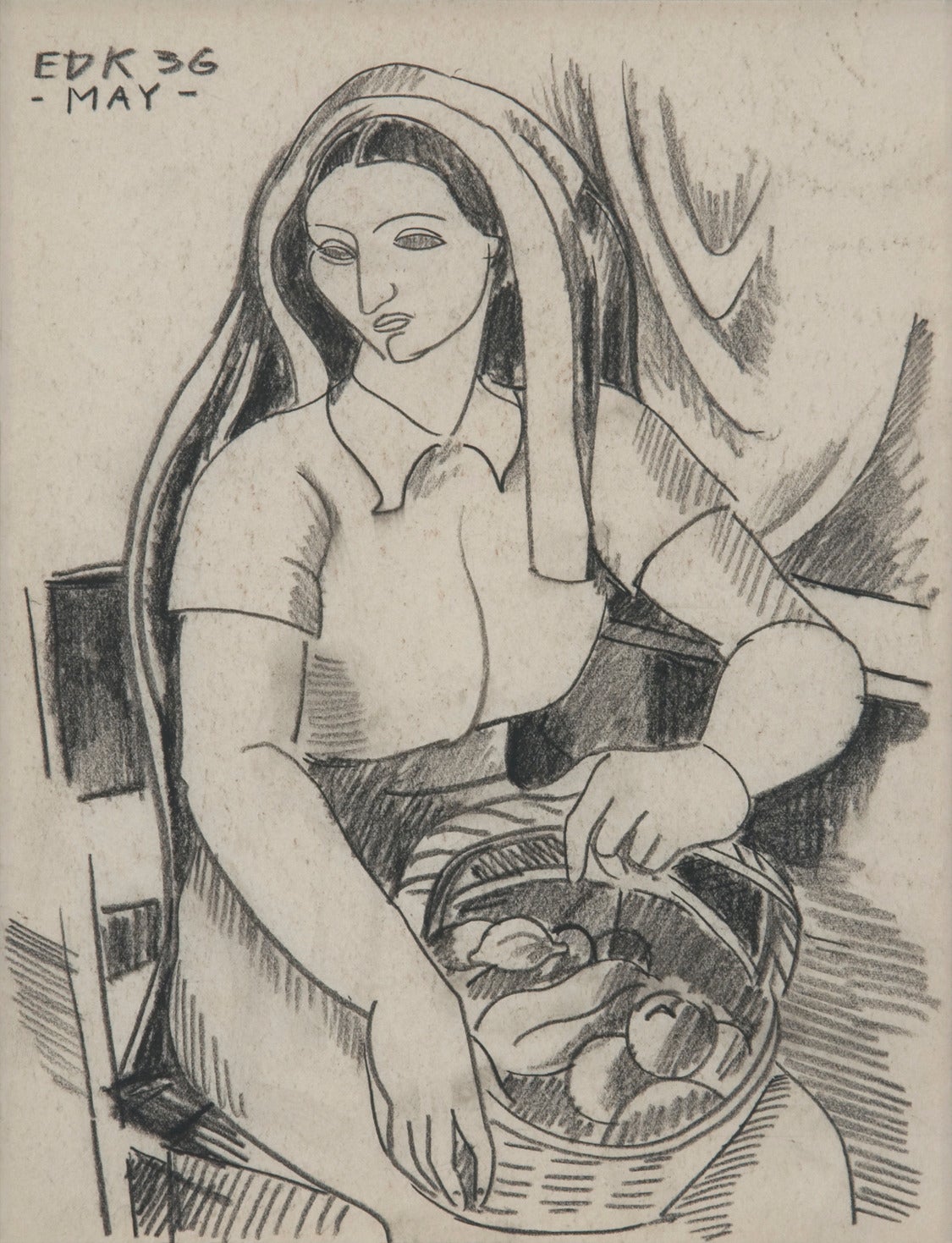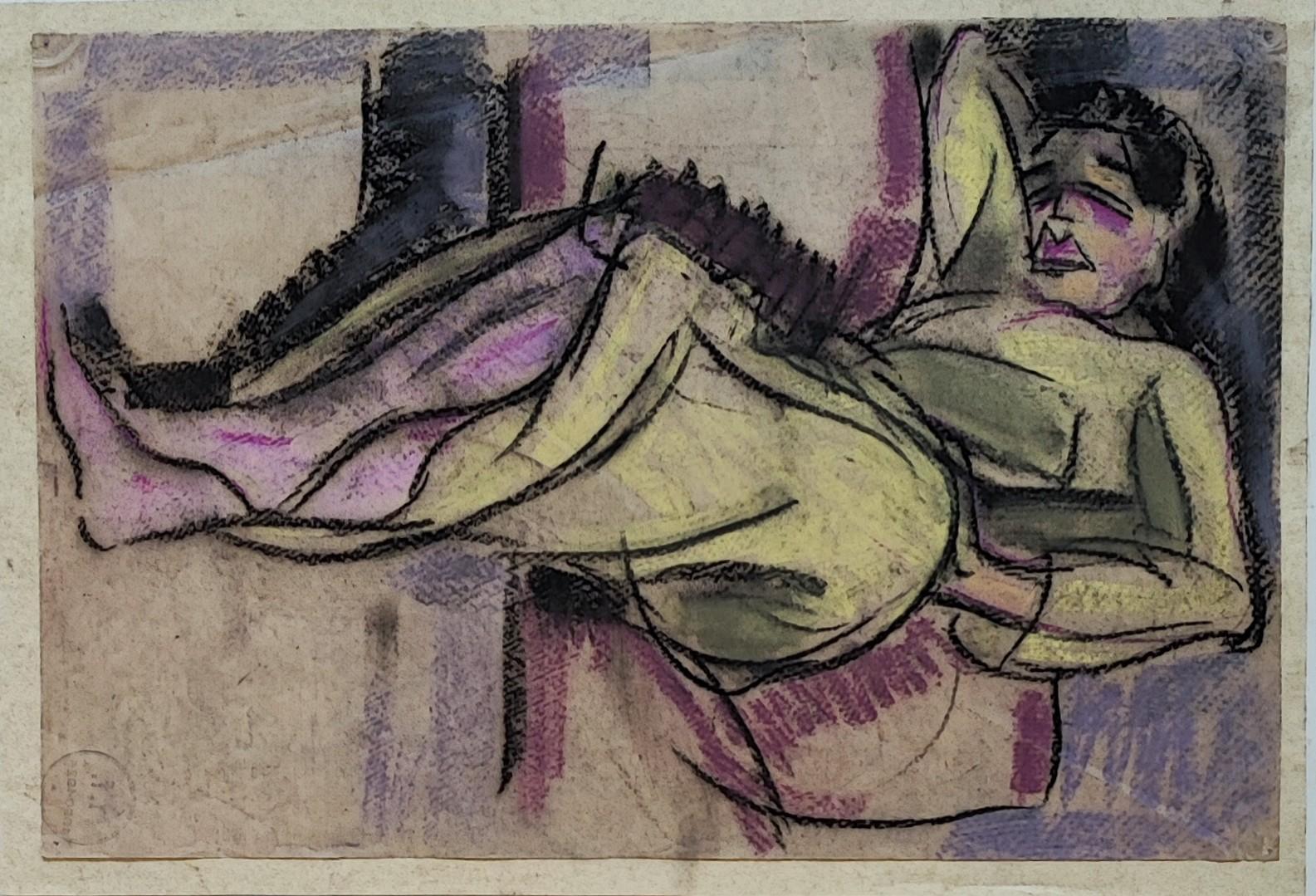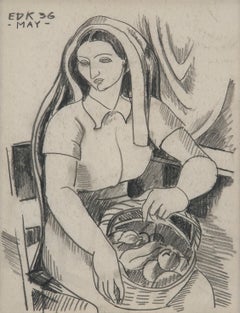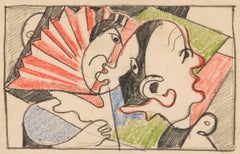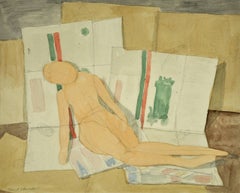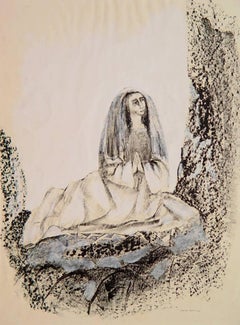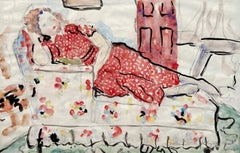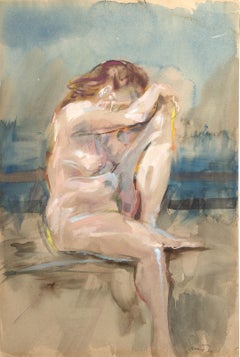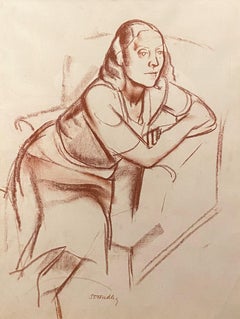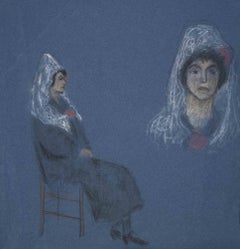Items Similar to Untitled (Woman Resting)
Want more images or videos?
Request additional images or videos from the seller
1 of 2
Edmund Daniel KinzingerUntitled (Woman Resting)circa 1936-1944
circa 1936-1944
$800
£604.09
€696.14
CA$1,129.14
A$1,244.85
CHF 651.27
MX$15,272.01
NOK 8,198.15
SEK 7,666.56
DKK 5,198.82
About the Item
Edmund D. Kinzinger was born in 1888, in Pforzhein, Germany. In Munich he studied at the Kirr Schule and the Staatliche Akademie, and pursued graduate studies at the Academie Modern, Paris. Before serving in the German Army, Kinzinger was a master student of Adolph Holzel at the Staatcliche Akademie, Stuttgart; he returned to study under Henrich Waldschmidt after nearly five years of artillery service.
Several of Kinzinger’s fellow students in Germany, such as Johannes Itten, would go on to be associated with the Bauhaus school. Coming into contact with all manner of artistic influences in Europe after World War One, Kinzinger’s work may be viewed as a “synthesis” of modernist styles. The influences of Abstract Expressionist, Cubist, and Futurist styles in Kinzinger’s work at this time are symptomatic of his contact with the likes of Hans Hofmann, Pablo Picasso, and Alexander Archipenko. Philip Van Keuren writes:
“His work closely resembles that of his contemporaries except for the mystical moodiness that seems to lay just under the surface of even the most non-objective works from this period. Their poetic mood springs less from his use of saturated, luminous colors and evocative forms and more from some undeniable power of perception drawn from his sense of the mystery of life. This mystic moodiness has its roots in personal inspirations. In this, Kinzinger drew upon German landscape painting traditions that existed before 1900” ("EDK: The Early Years 1913-1935" by Philip Van Keuren, published by The Gallery, Hughes-Trigg Student Center, Southern Methodist University, Dallas, Texas, 1992).
Edmund D. Kinzinger taught in the United States, Mexico, Spain, and France. He served as director of the Hans Hofmann School of Fine Arts in Munich and of the Ecole de L’ Epoque in Paris. He earned a doctorate in fine arts from the University of Iowa in 1942, and was the Chairman of the Art Department at Baylor University from 1935 to 1950.
The dimensions including the mat are 20 x 16 inches.
- Creator:Edmund Daniel Kinzinger (1888-1963, American)
- Creation Year:circa 1936-1944
- Dimensions:Height: 11 in (27.94 cm)Width: 8.5 in (21.59 cm)
- Medium:
- Movement & Style:
- Period:
- Condition:
- Gallery Location:Dallas, TX
- Reference Number:Seller: 117081stDibs: LU257805603
About the Seller
5.0
Recognized Seller
These prestigious sellers are industry leaders and represent the highest echelon for item quality and design.
Established in 1954
1stDibs seller since 2013
161 sales on 1stDibs
Typical response time: Several days
Associations
Art Dealers Association of America
- ShippingRetrieving quote...Shipping from: Dallas, TX
- Return Policy
Authenticity Guarantee
In the unlikely event there’s an issue with an item’s authenticity, contact us within 1 year for a full refund. DetailsMoney-Back Guarantee
If your item is not as described, is damaged in transit, or does not arrive, contact us within 7 days for a full refund. Details24-Hour Cancellation
You have a 24-hour grace period in which to reconsider your purchase, with no questions asked.Vetted Professional Sellers
Our world-class sellers must adhere to strict standards for service and quality, maintaining the integrity of our listings.Price-Match Guarantee
If you find that a seller listed the same item for a lower price elsewhere, we’ll match it.Trusted Global Delivery
Our best-in-class carrier network provides specialized shipping options worldwide, including custom delivery.More From This Seller
View AllUntitled
By Edmund Daniel Kinzinger
Located in Dallas, TX
Edmund D. Kinzinger was the Chairman of the Art Department at Baylor University from 1935 to 1950. Previously, Kinzinger was the Director of the Hans Hofmann School of Fine Arts in Munich. Kinzinger left Germany in 1933 because he did not agree with the Nazi government. Kinzinger’s early work in Germany was influenced by Theosophy: a philosophy based on mystical insight into the nature of God. This guided Kinzinger’s art away from representation and towards abstraction. Later, Kinzinger assimilated German Expressionism, French Cubism, and Italian Futurism with his own continuing sense of the mystery of life. While his work incorporated the formal qualities of cubism, there was always a mystical moodiness just below the surface.
"From EDK: The Early Years 1913-1935" by Philip Van Keuren...
Category
1930s Figurative Drawings and Watercolors
Materials
Conté, Paper
Untitled
By Edmund Daniel Kinzinger
Located in Dallas, TX
Edmund D. Kinzinger was born in 1888, to an upper-middle class family in Pforzhein, Germany. In Munich he studied at the Kirr Schule and the Staatliche Akademie, and pursued graduate studies at the Academie Modern, Paris. Before serving in the German Army, Kinzinger was a master student of Adolph Holzel at the Staatcliche Akademie, Stuttgart; he returned to study under Henrich Waldschmidt after nearly five years of artillery service.
Several of Kinzinger’s fellow students in Germany, such as Johannes Itten, would go on to be associated with the Bauhaus school. Coming into contact with all manner of artistic influences in Europe after World War One, Kinzinger’s work may be viewed as a “synthesis” of modernist styles. The influences of Abstract Expressionist, Cubist, and Futurist styles in Kinzinger’s work at this time are symptomatic of his contact with the likes of Hans Hofmann, Pablo Picasso, and Alexander Archipenko. Philip Van Keuren...
Category
1930s Cubist Abstract Drawings and Watercolors
Materials
Conté, Crayon, Paper
Study for Bag Lady
By Vera Barnett
Located in Dallas, TX
This is Vera Barnett's study for her painting "Bag Lady" from her series of paintings that she calls "Classical Plastique."
Category
21st Century and Contemporary Contemporary Nude Drawings and Watercolors
Materials
Paper, Watercolor
Saint Rose on a Bed of Glass
By Kelly Fearing
Located in Dallas, TX
This is lithographic crayon and gouache on paper
Category
1950s American Modern Figurative Drawings and Watercolors
Materials
Paper, Crayon, Gouache
Lady with Flower
Located in Dallas, TX
signed "E.JB." at lower right
21 7/8 x 17 inches including frame
Category
1920s Modern Figurative Drawings and Watercolors
Materials
Watercolor
Cleo McGee Grading Papers
By John Cobb
Located in Dallas, TX
“What he has learned from the art of the museums, Cobb has fully assimilated and modified in the development of his own personal vision. And while enriched by these historical perspe...
Category
2010s Contemporary Interior Drawings and Watercolors
Materials
Paper, Sumi Ink, Watercolor, Pencil
You May Also Like
Untitled (Reclining Woman)
By Malvin Marr Albright
Located in Chicago, IL
A 1933 watercolor of a reclining woman in a red dress, by Malvin Marr Albright (Zsissily), the identical twin of artist Ivan Albright and son of artist Adam Le Lorraine Albright. Im...
Category
1930s American Modern Figurative Drawings and Watercolors
Materials
Watercolor, Graphite, Paper
$850 Sale Price
29% Off
Woman Resting, Modern Watercolor, Acrylic and Graphite on Paper by Sidney Simon
Located in Long Island City, NY
Sidney Simon, American (1917 - 1997) - Woman Resting, Year: circa 1960, Medium: Watercolor, Acrylic and Graphite on Paper, signed lower right, Size: 18.5 x 12.5 in. (46.99 x 31.75 cm)
Category
1960s Modern Nude Drawings and Watercolors
Materials
Acrylic, Watercolor
Woman at Rest, Signed Charcoal Sketch, 20th Century British
By James Stroudley
Located in London, GB
Charcoal on paper, signed lower left
Image size: 15 3/4 x 21 inches (40 x 53.5 cm)
Contemporary frame
James Stroudley
Stroudley was born in London on 17 June 1906, the son of James Stroudley, showcard and ticket writer. He studied at Clapham School of Art (1923-27) and then at the Royal College of Art (1927-30), where his teachers included Alan Gwynne-Jones and William Rothenstein. As a recipient of the first Abbey Scholarship he was able to spend three years in Italy from 1930, where he absorbed the influences of Giotto and Piero della Francesca, and produced one of the last wholly satisfying decorative cycles by a Rome Scholar of the period. From 1934, he exhibited at the Royal Society of British Artists, and was elected to its membership in the following year.
From the Second World War – in which he worked with the Camouflage Unit – Stroudley taught at St Martin’s School of Art and was a visiting lecturer at the Royal Academy Schools. Though he continued to live in London, his later work, exhibited at the Royal Academy from 1955, indicated regular painting trips to Kent and Sussex coasts. However, much of his later work was abstract. In 1971, his former student, Peter Coker, paid homage to Stroudley by including his work in the exhibition ‘Pupil & Masters’, held at Westgate House, Long Melford, Suffolk.
Stroudley married three times, and his wives included the fashion artist to the Sun newspaper...
Category
Mid-20th Century Modern Figurative Drawings and Watercolors
Materials
Paper, Charcoal
Woman Sitting - Drawing by Suzie Bernardeau - Mid-20th Century
Located in Roma, IT
Woman Sitting is an artwork made by Suzie Bernardeau in the mid-20th century.
Good condition.
Drawing made with crayons on blue paper.
Category
Mid-20th Century Modern Figurative Drawings and Watercolors
Materials
Paper, Pastel
Young woman lying down
By Henri Fehr
Located in Genève, GE
Work on paper
Workshop stamp
Work : 27.5 x 40 cm
Category
20th Century Figurative Drawings and Watercolors
Materials
Charcoal, Crayon, Pastel
Woman at Rest - Original Drawing By Pierre Georges Jeanniot - Early 20th century
By Pierre Georges Jeanniot
Located in Roma, IT
Woman at Rest is an original Drawing on paper realized by painter Pierre Georges Jeanniot (1848-1934).
Drawing in Pencil.
Hand-signed on the lower.
Good conditions.
Pierre-George...
Category
Early 20th Century Modern Portrait Drawings and Watercolors
Materials
Pencil
More Ways To Browse
Mexican Woman
Mexican Woman Painting
Painting Of Laying Woman
Resting Woman Paintings
Philip Van Keuren
Painting Of A Rose
Abstract Acrylic Paintings In Red
Looking Back Painting
Early California Artists
Paintings 1964
Mid Century Modern Art Original
Paris Fashion Art
Vintage Black And White Photographs
Philadelphia Painting
Green Brown Painting
Italian Palazzo
Purple Paintings
Artist Wells
